Often, many people think about what the things they wear every day are made of. Unscrupulous manufacturers add only synthetics to their fabrics, which causes allergies or redness in people. This article tells about what ribana is and what functions it has.
What is ribana fabric
This is a natural material that does not cause allergies. It is widely used in the sewing factory. The fabric is obtained by knitting, where the outer loops alternate with the inner ones. As a result, a small ribbing is formed.
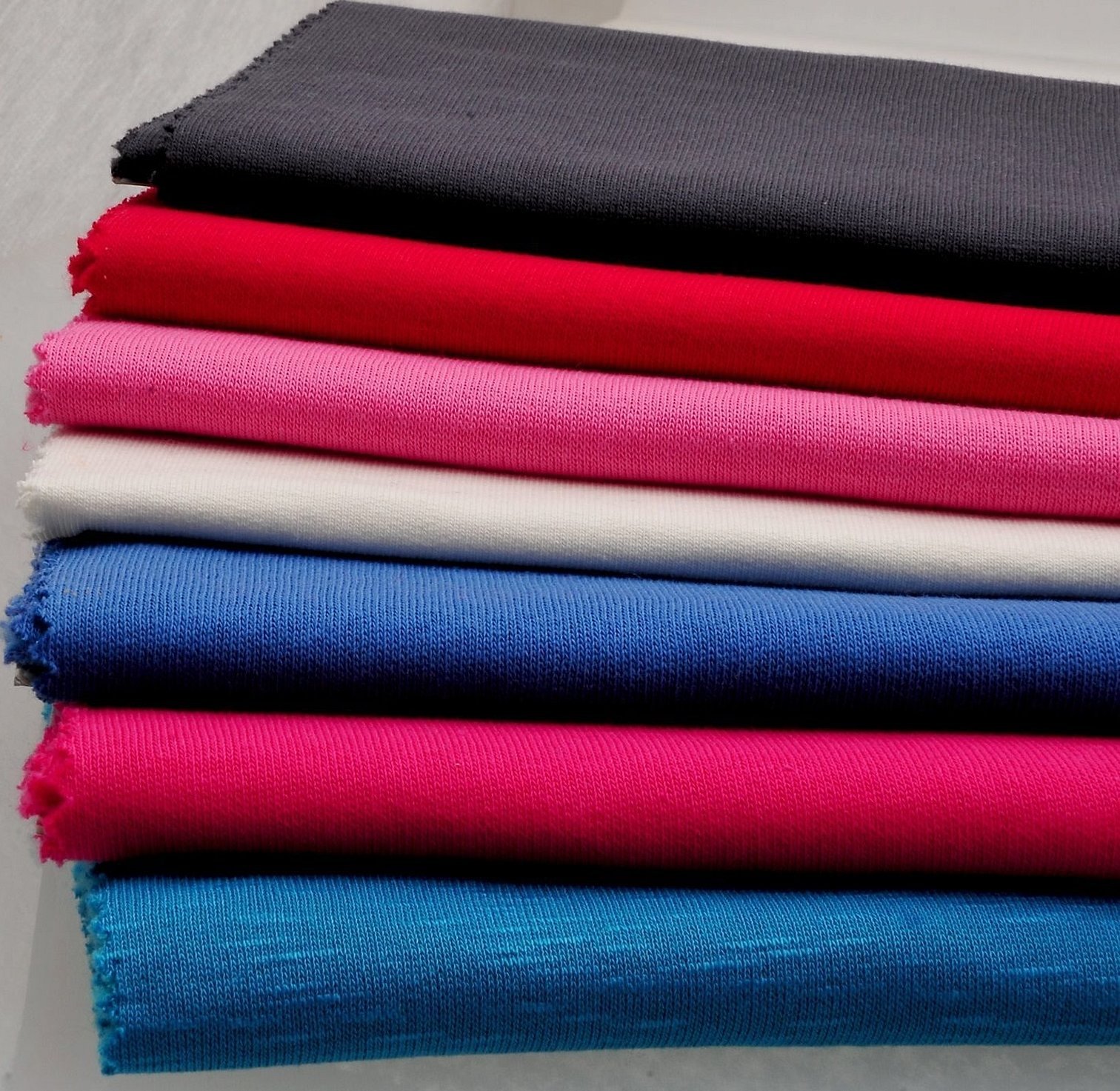
The fabric is produced on a special knitting machine and is used to create children's and adult clothing, sports suits. Many people do not know how to say correctly, rebana or ribana. But there is no difference, because both options are correct. Recently, manufacturers have been producing not only clothing, but also various accessories, such as sports cloth bags, car seat covers and ironing boards.
In this article you can find answers to the questions: what is ribana and where is it used.
Properties and characteristics
This fabric has a large number of properties, mainly it is used to make things for children. Below are the main characteristics and definition of what kind of fabric is ribana with lycra:
- Good stretchability and elasticity of the fabric is achieved due to the unique weaving of yarn with the addition of lycra (this is one of the best materials in its composition).
- Items made from this material hold their shape well, withstand up to 100 washes without shrinkage, the threads do not shine, and pellets do not form. If properly cared for, the product will be like new for many years.
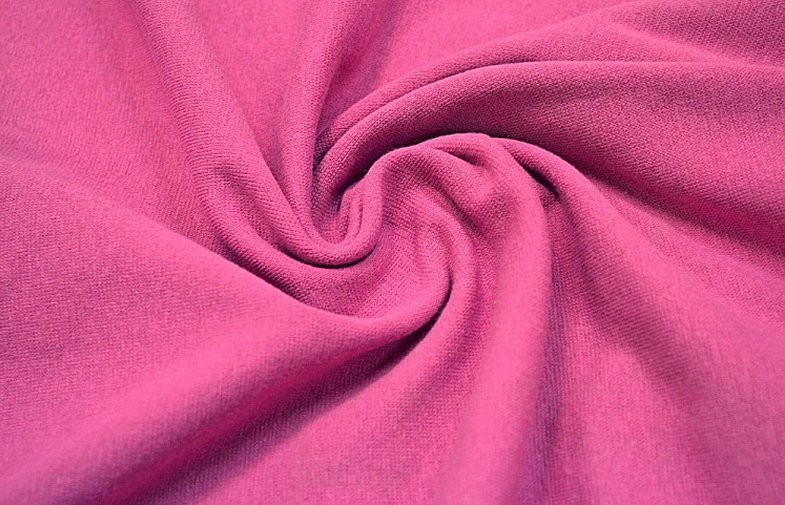
- Air circulates well, allowing the body to breathe and does not retain moisture.
- Between the fibers of the fabric, many small cavities appear, which are filled with air, which allows things made from ribana to retain heat well in the winter.
- Due to its naturalness, the material does not cause skin irritation.
For these properties, many people prefer this material, and not the same kulirka. The most important thing is that the material is relatively inexpensive.
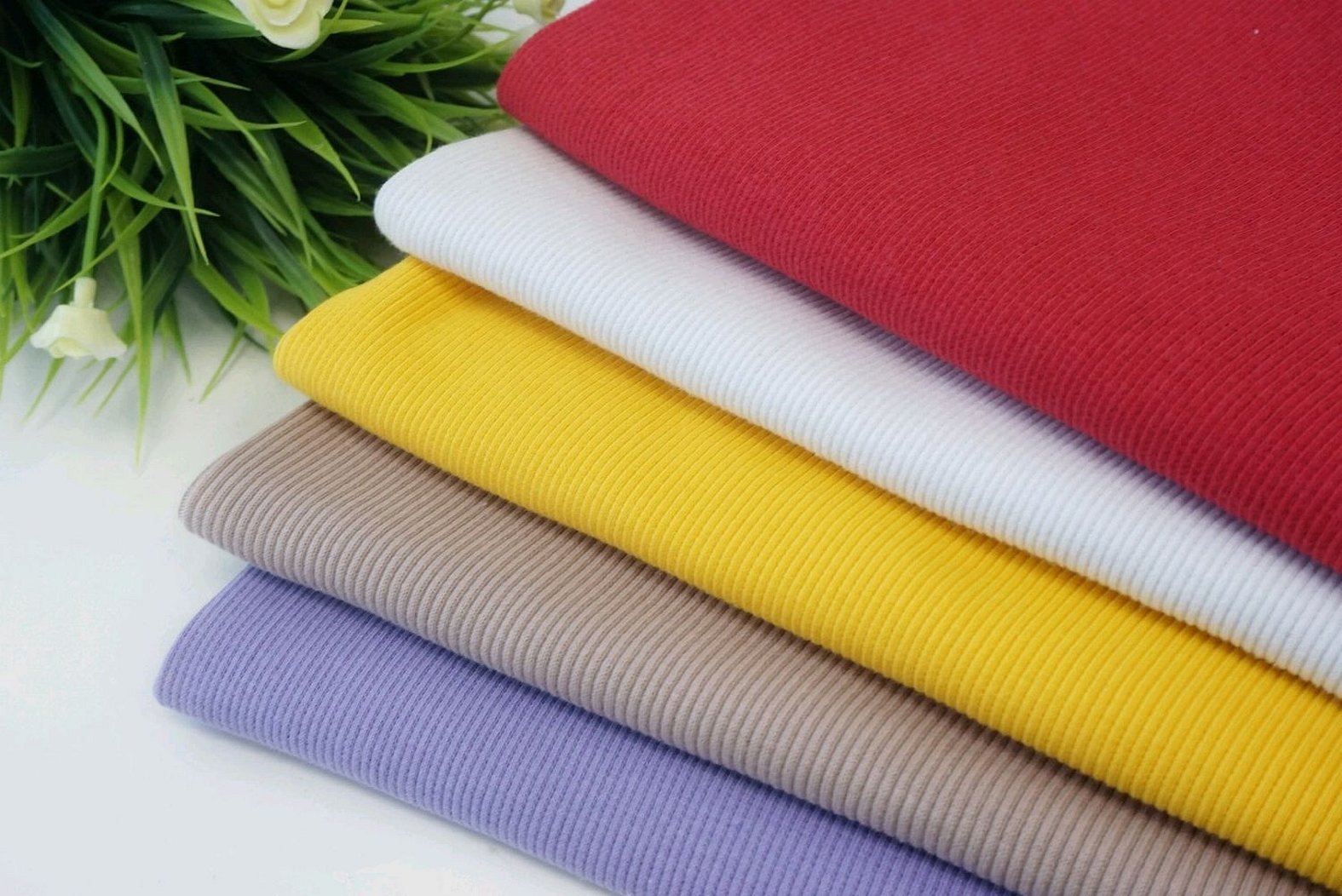
Ribana and cashmere: the difference
Beginner craftswomen often have a choice between kashkorse or ribana materials. The difference between them is small, because they both contain up to 95% cotton, and the rest is synthetic. What is ribana cotton? This is a material that will be completely natural up to 100%.
The only important difference between these two fabrics is the knitting technique. Ribana has a very small rib, it is mainly used for bed linen or children's clothes (diapers, undershirts). Kashkorse has a larger rib, so it is used to make things for adults. These are mainly winter coats and jackets, as well as some headwear.
Types and scope of application
Comfortable and convenient ribana is used in sewing underwear and everyday items for the whole family, as well as household items. For example, kitchen towels, potholders or decorative items.

Knitwear is necessary for decorative finishing, inserts and elastic decoration of necklines and sleeves.
The elastic ribana fabric with the addition of lycra stretches well and is therefore suitable for collars, necklines and sleeves in jackets, windbreakers and coats. The material is used to make T-shirts, turtlenecks and sweaters, nightwear and underwear, socks and housecoats.
What is fleece ribana fabric and what is its application? Fleece ribana is used for outerwear, sports equipment or toys. The fabric has a fairly high density, retains heat well and does not wrinkle due to the elastic threads inside.
Most things for babies are sewn from ribana. These are beautiful and comfortable sundresses, sweaters, T-shirts, hats and trousers.
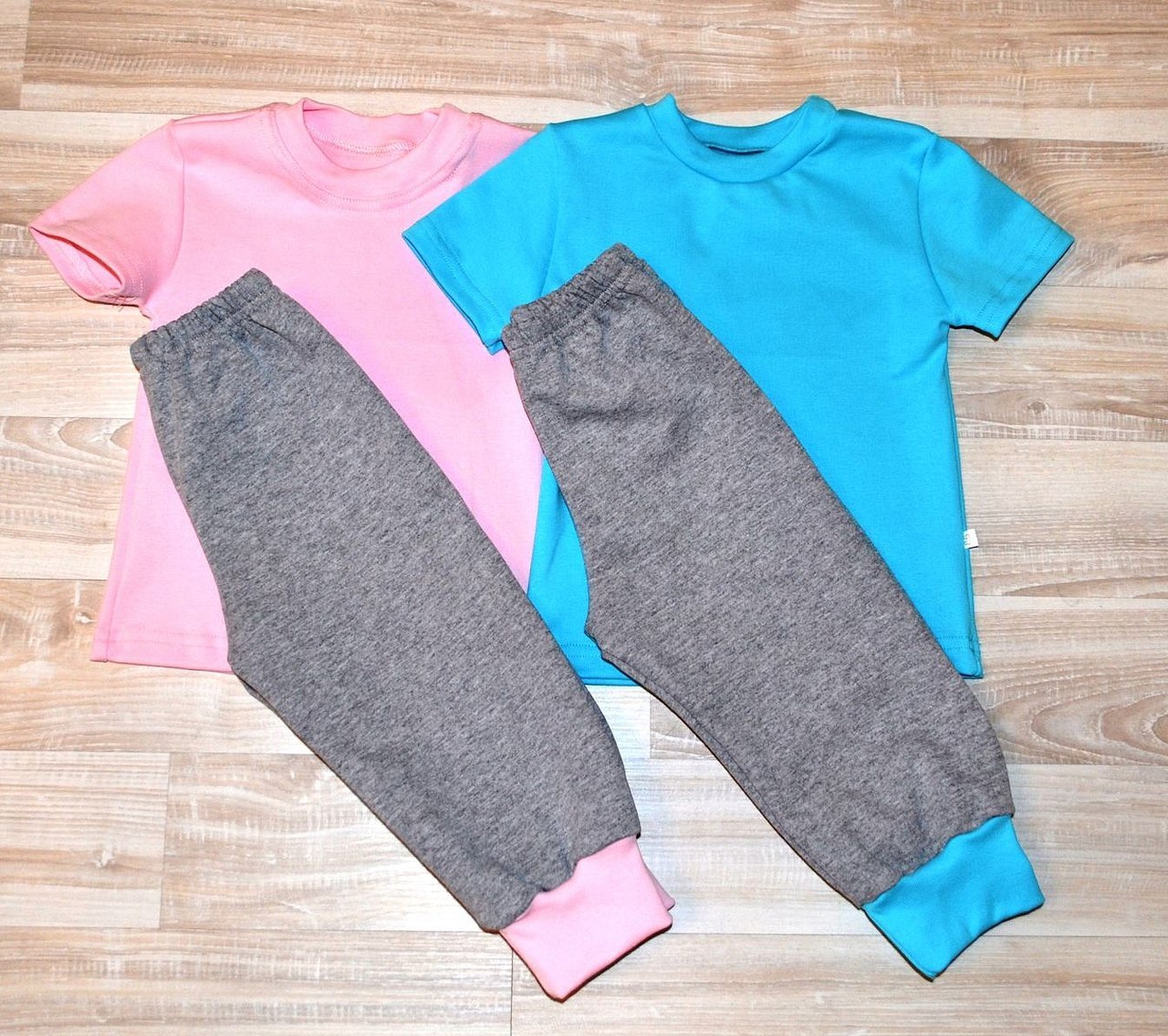
Please note! Things for babies are made of ribana peigne, which is of high quality and durability. The material is very soft and does not cause allergies in the child.
Excellent performance properties of cotton material make the products practical and comfortable. At the same time, they look beautiful and unique.
Opening
Basic rules and guidelines:
- During cutting, the material must not be stretched;
- It is necessary to clearly distinguish between the transverse and longitudinal directions of the threads. It is advisable to sew only in such a way that the knitted loops are located along the fabric;
- you need to pay attention to how the material behaves after ironing and washing. Sometimes it can shrink. Then you need to note the size range and remember about shrinkage. It is advisable to indicate this on the product label;

- it is necessary to use machines for working with elastic fabrics. The needle for knitwear will have a more rounded end. Thanks to this, the risk of damage to the product will be reduced;
- the fabric under the seam stretches. To make the product much better quality, it is necessary to use ribbing to avoid deformation of the garment at the seams. Often, ribbing is sewn only on the shoulder seams and neckline.
It is very easy to work with the fabric, and does not require great tailoring skills. It is enough to be able to make simple stitches. Therefore, it is perfect for beginners who experiment with different elements of clothing.
How to calculate the length of the ribana for the neck
To calculate the length for the collar, you need to use the formula: divide the collar length by the number PI and subtract two neck widths. The result must be multiplied by the number PI.
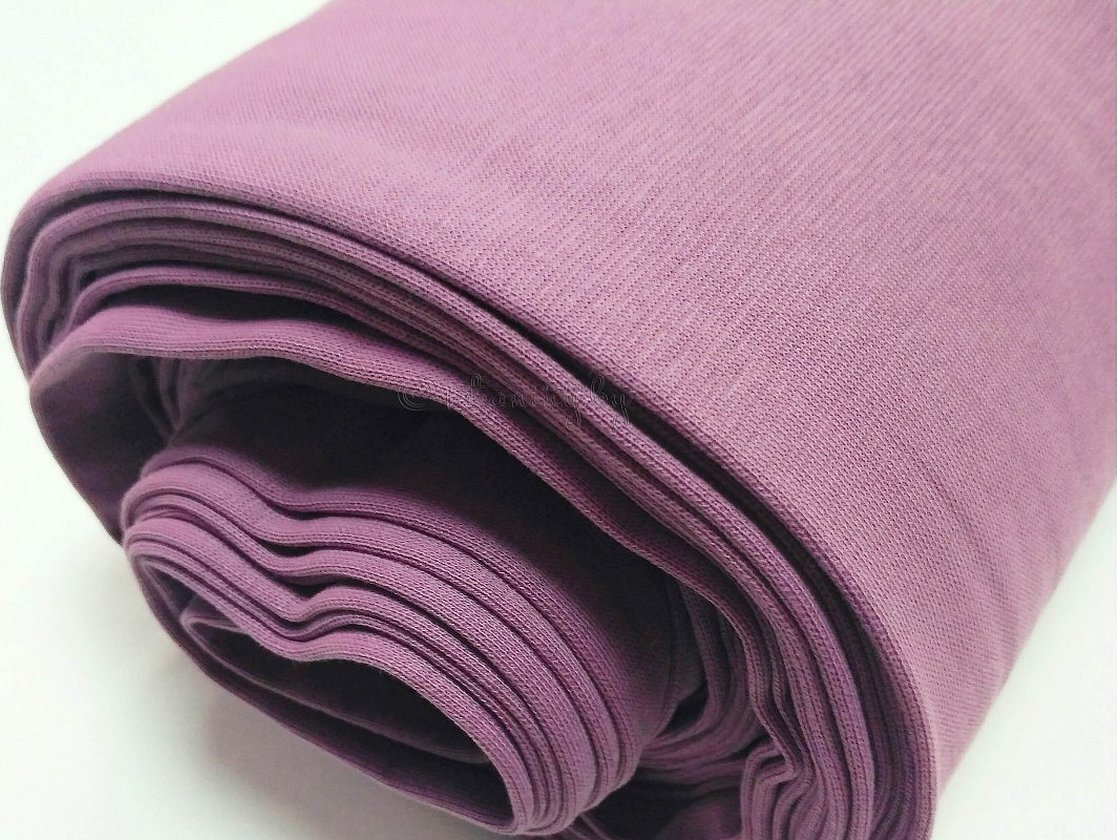
Fabrics for blouses
Ribana is used to make excellent light and airy blouses and shirts. They can be worn to the office or just for a walk. Paired with skirts or cotton trousers.
Care
Caring for this fabric is quite capricious. You need special detergents for washing, a steamer or a good iron with many modes. Below is a description of the care steps.
It is advisable to avoid detergents that contain chlorine and bleach. Because of these components, the suede that is part of the ribana may lose its qualities.
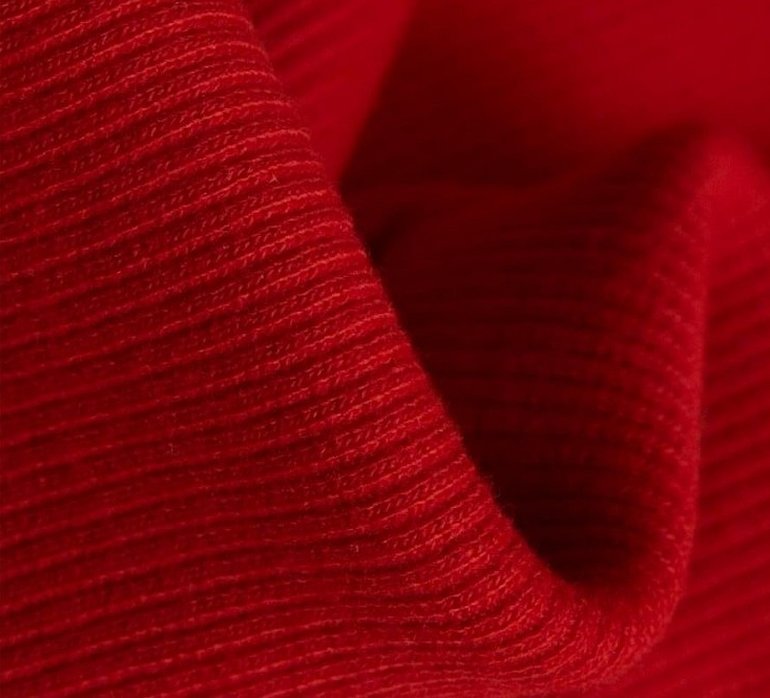
It is recommended to avoid direct sunlight during drying. Otherwise, the fabric will quickly begin to fade.
It is recommended to dry things horizontally, so as not to stretch them under the weight of water. For white things, it is allowed to use bleaches and high water temperature (up to 100 degrees).
Attention! It is strictly forbidden to wring things out by hand or to wring them out at high speeds in the washing machine.
You can wring it out using a terry towel. For washing, it is advisable not to exceed a water temperature of 40 degrees. The best product for ribana is liquid powder for delicate fabrics. You can iron with a warm iron or a steamer.

Pros and cons
Main advantages of the material:
- good hygroscopicity. The fabric absorbs moisture, so it is well suited for underwear;
- Yarn strength. Ribana products are resistant to mechanical defects. This characteristic is achieved thanks to the weaving method—cross knitting with double weaving of the yarn;
- Wear resistance and durability during use. Items do not shrink or wrinkle after washing, they keep their shape. No pellets appear over time. If the fabric has a fleece, such items can be used in winter;
- provides high thermoregulation. The material does not squeeze the body and retains heat well.
Attention! The natural material has only three disadvantages. Ribana items take a long time to dry. The fabric does not tolerate ultraviolet rays well and fades in the open sun. The texture of the smooth fabric is quite easy to spoil with improper care.
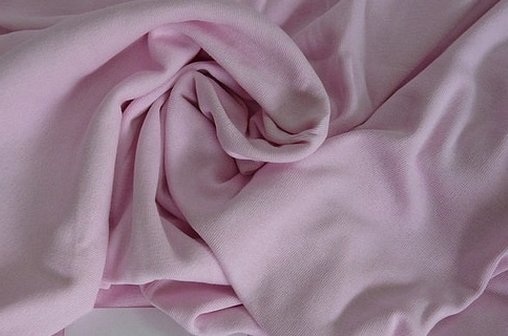
Reviews
Alena, 29 years old:
"After my daughter was born, I bought myself a lot of ribana diapers and undershirts for babies. The baby feels good and comfortable in them, sleeps without problems in the clothes. But, unfortunately, I have to wash the clothes almost every day, but so far there have been no difficulties. The threads do not shine, there are no visible pellets. I definitely recommend young parents to buy clothes from such fabric. At least while the child is a baby."
Denis, 33 years old:
"I bought myself a sports jacket and sweatpants made of ribana. The saleswoman told me about its properties and other things for a long time, and I agreed. After the first workout, I realized that I had made the right choice. Since I am heavy, I sweated profusely during the workouts, but I did not feel hot or stuffy. The suit was well ventilated and did not restrict movement during physical activity. I think I will also buy myself a few T-shirts for the summer."

Tatiana, 24 years old:
"I bought the ribana fabric to sew a jumpsuit for my son that he can wear around the house. I had no difficulties working with the fabric, I didn't even have to process the edges, as they didn't crumble. It's quite comfortable for my child to play in it in the apartment, and the product turned out to be very light, almost weightless. I'm happy with the choice and will definitely buy this material next time. I was also pleased with the range of colors."
Thus, ribana has multifaceted properties and qualities. It is perfect for children for everyday wear, does not cause redness or restriction of movement. Even a novice seamstress can handle sewing things from this material.




